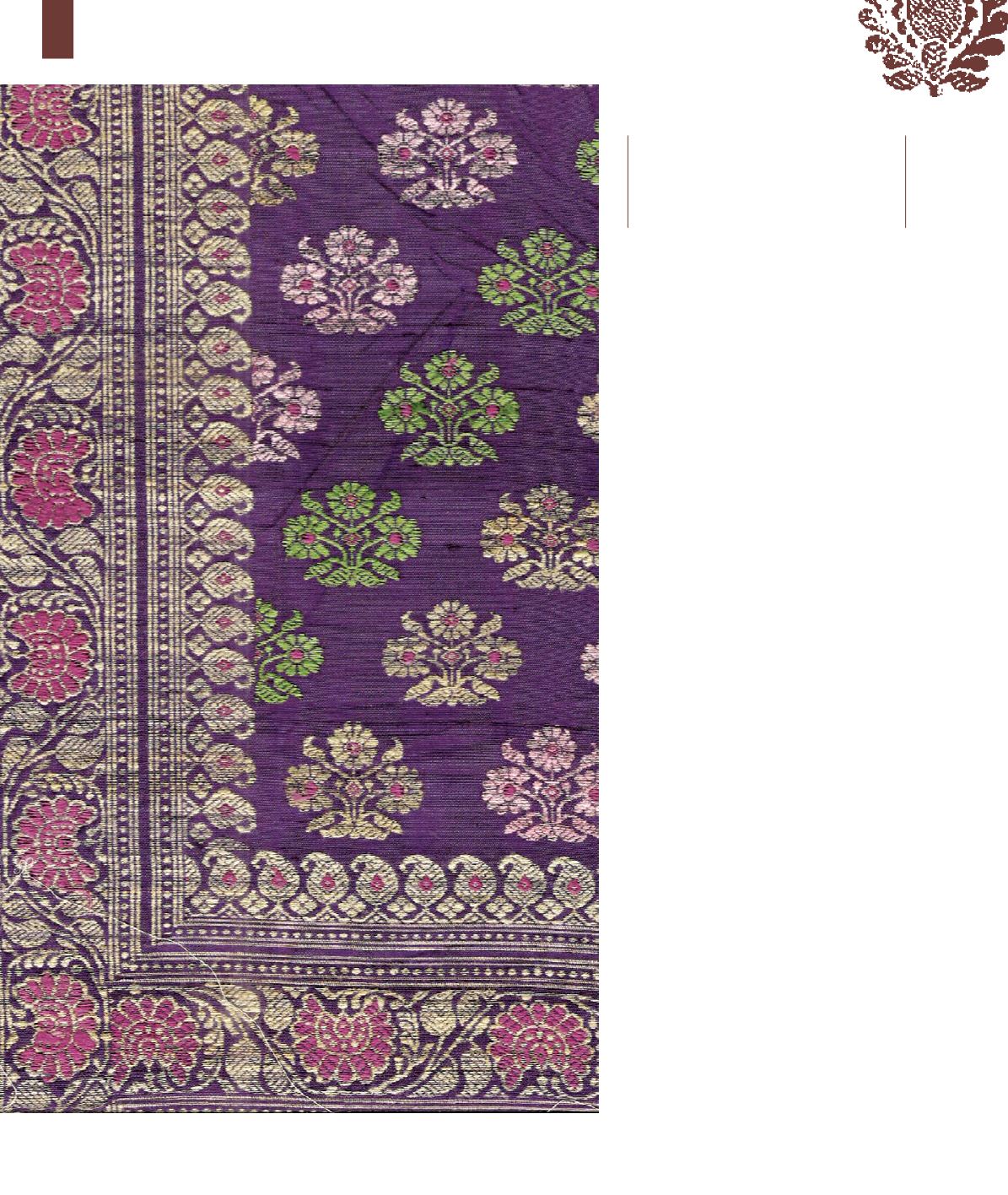
96
In handicrafts and handlooms,
expertise, devotion and
eagerness are important to
achieve exceptional pieces.
can be moulded into the art so that it becomes
a part of one’s heart and soul. When learnt at a
later stage, it tends to be more of a profession
than a passion.
In this context, it would be helpful if the
government started a programme where master
weavers are encouraged to train young weavers
at an age permitted by the law. A Savings
Account should be opened in the name of the
apprentice weaver and a stipend must be given.
Data of all weavers should be maintained
and a yearly survey should be undertaken
to follow-up if the trainee weavers are still
in the profession or not. In handicrafts and
handlooms, expertise, devotion and eagerness
are important to achieve exceptional pieces.
Today, we have money, home and household
items, but today’s weavers are not able to show
the same expertise in weaving. This is because
either they have not learnt the art from old
master weavers or they are not able to give their
maximum effort. Thus, in today’s environment,
the art is disappearing.
The government is allocating money through
NGOs to promote handlooms and handicrafts.
However, this is often used by NGOs for
marketing. The NGOs feel that they have
provided a platform for craftspersons to sell
their work. Another viewpoint is that if a
craftsperson’s work is good, by word of mouth
people will get to know about it, and his or
her work will be appreciated and sold. What
is required is that money reaches the weavers
to give them the encouragement to take up
weaving, at the right age and for the right
reasons.
In today’s scenario, Gethua (shaft weaving)
and Naqsha
(Jala weaving) are not taught or


